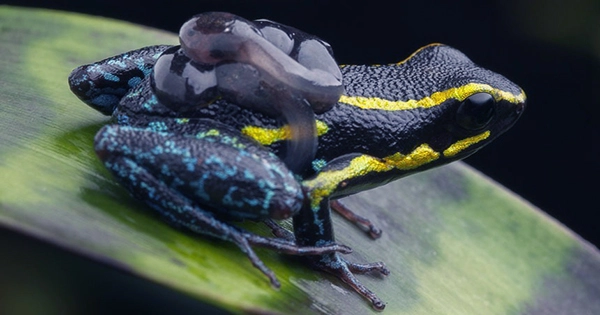Tadpoles of the dyeing poison dart frog Dendrobates tinctorius begin life in a large pool of cannibals, which is a difficult task. Tadpoles compete in a Battle Royale to survive until they reach adulthood in this unusual creche, but study has discovered that various factors can affect an individual’s chances of survival. Fighting to the death normally favors larger individuals, and the same is true for tadpoles attempting to survive in the treacherous ponds that their fathers have placed them in. Although the small bodies of water in which D. tinctorius juveniles reside in the tropics are limited in supplies (thus the cannibalism), muscle isn’t the main element in survival.
Intraspecies aggressiveness, like cannibalism, frees up resources, but it also reduces the capacity of your genetic material to spread (also known as inclusive fitness) if you’re wiping out your near relatives. As a result, certain animals have evolved to avoid killing their relatives when they go on a killing spree. To find out if this was the case for D. tinctorius, researchers from a new study published in Behavioral Ecology built a tadpole war arena to test how the size and genetic relatedness affected the tadpoles aggression.
“Before you eat someone, you have to attack them first,” stated the researchers, who wanted to see how aggressive the tadpoles were instead of letting them eat each other. They were able to observe the role of size and relatedness by pitting full-sibling, half-sibling, and unrelated tadpoles against one another. They discovered that in non-sibling battles, the most aggressive tadpoles were the largest individuals and that siblings attacked each other less frequently.
“We discovered that hostility is proportional to both size and relatedness: when placed in pairs, giant tadpoles are half as hostile against their smaller siblings as they are toward [non-siblings],” the scientists summarized. “It appears that being in the same family offers some protection from aggression, yet no one is ever fully safe.”
The survivors who make it through the whole transformation will emerge from the Pool of Death to live in the wetter areas of French Guiana and sections of Brazil. As an adult, the dyeing poison dart frog displays a bright colour that warns of the highly lethal venom contained on its skin. Humans have employed this efficient protective mechanism to lace darts used for hunting, as the name implies. It’s only right that a creature born in a pool of blood should grow up to be a physical weapon.













